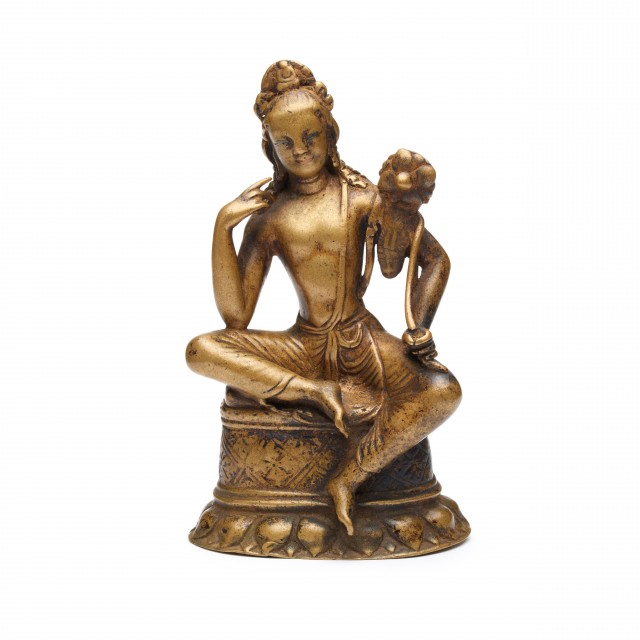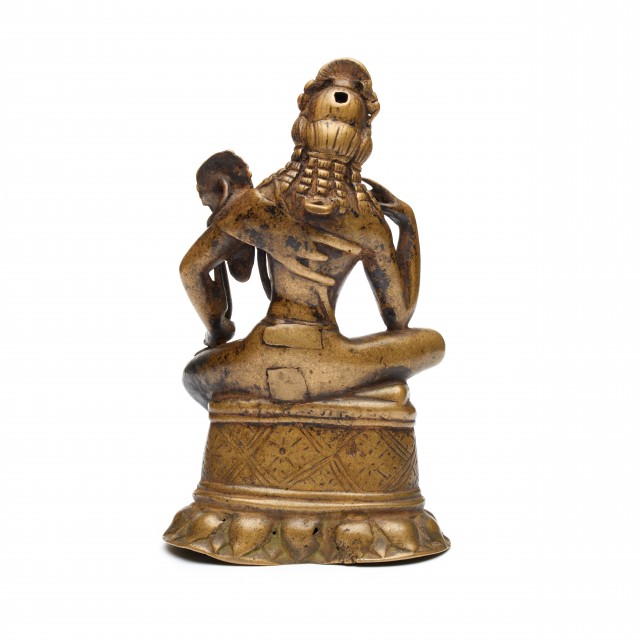
Bodhisattva Avalokiteshvara

Photography by Synthescape, Digital image © Asia Society

Photography by Synthescape, Digital image © Asia Society
Bodhisattva Avalokiteshvara
8th century
Kashmir
Copper alloy with inlays of copper and silver
H. 7 7/8 x W. 5 x D. 2 3/4 in. (20 x 12.7 x 6.98 cm)
Asia Society, New York: Estate of Blanchette Hooker Rockefeller, 1993.2
Licensing inquiries
Avalokiteshvara, the Bodhisattva of Compassion and the most popular bodhisattva in Buddhism, can be identified by the seated figure of the Buddha Amitabha in his headdress, by the antelope skin draped over his left shoulder, and by the lotus he holds in his left hand. The figure's lack of jewelry and the antelope skin are references to ascetic practices and may be linked to the interest in bodhisattvas as practitioners of strict self-denial as a measure of spiritual discipline that is found in Indian art from the 4th through 6th centuries and subsequently in Southeast Asian Buddhist art. The position of Avalokiteshvara's right hand, which points to his cheek, is thought to indicate contemplation or pensiveness. The worn condition of the face indicates that this image was worshipped and touched for many centuries. This figure once had a halo as indicated by the attachment which remains in the middle of its back.


